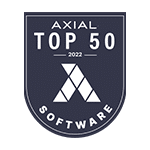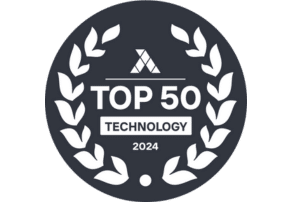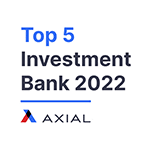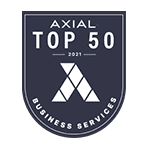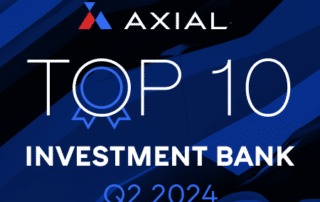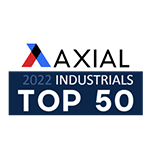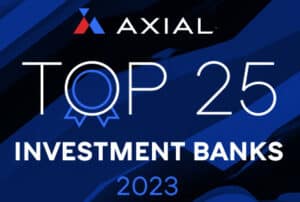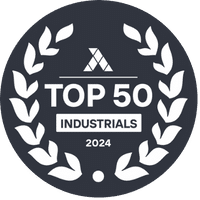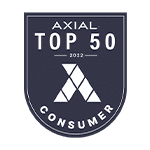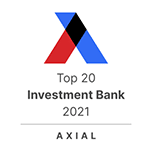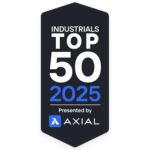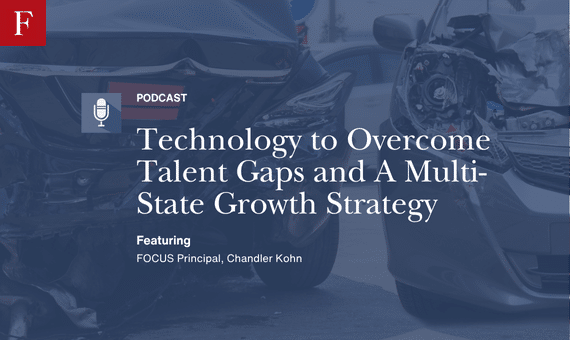
Technology to Overcome Talent Gaps and A Multi-State Growth Strategy
In this episode of Know to Grow, host Chandler Kohn sits down with Mike Schwarz who shares his journey from software engineering at Sun Microsystems and consulting with Fortune 500s to running Iron Buffalo, Colorado’s largest independent Class 8 semi-truck repair facility. He and his partners transformed a Denver-based business, expanded into Montana, and rebranded into a family-run operation with over 50 employees. In this episode, Mike discusses the challenges of growing across states, how technology is reshaping heavy-duty repair, the rise of AI-powered diagnostics, and why strong branding and culture are just as critical as shop floor tools.
Mike Schwarz: Yeah, so we are in Colorado. We’re the largest independent semi truck class 8 repair facility in the state. We expanded into Montana and there’s kind of a whole story that I’m sure we’ll get into around that we specialize in. So we have a large facility kind of right outside of downtown Denver and we specialize in vocational vehicles. So and we, we maintain kind of the majority of the construction delivery fleet in the greater Denver area. So we, we work both on the tractor and the, the specialty truck mounted booms and, and other vocational specialty equipment that’s, that’s mounted on there. So we specialize in that type of stuff.
Chandler Kohn: And is that the same in the Montana location?
Mike Schwarz: Montana is a little different. We definitely target similar types of services, but they started as a mobile operation and their first mechanic specialized in, in forklifts. And so we’ve, we’ve evolved into truck and trailer there as we’ve hired more people and we now have a physical location. So when you’re ready we can definitely talk about kind of how that evolved and like why we have a shop that’s 15 hours away and all that kind of stuff.
Chandler Kohn: Yeah, yeah, we’ll get into some of the branding across states and, and how the operation is different, how it’s the same. You come from a technology background, not, not a, not a heavy duty or automotive background. Explain how you got into the space and then let’s talk about a little bit, let’s take advantage of your background and talk a little bit about technology in the business.
Mike Schwarz: Yeah, so I came from, so I have a bachelor’s in business and a master’s of science in engineering from the University of Colorado. I’ve lived in, in or outside of Boulder, Colorado since 1998. Worked, you know, left grad school actually during grad school I joined Sun Microsystems as a Java software engineer. And my, the first 20 years of my career. I’m 46, so the first 20 years of my career was in the tech industry. I went into consulting. I worked for like a small boutique consulting firm that got bought by a mid sized consulting firm and I worked in telecom and software and, and companies like Google and Gogo Inflight and Western Union and Oracle and both on the consulting side and also as an in house employee. And at some point in my career, things didn’t exactly go my way for a year or something like that. And so I was like, you know what? I want to get out of corporate America and buy a business. And I went on this journey, probably three year journey where I looked at franchises and then I was like, you know, I don’t understand this. I can’t. They’re successful franchises and within the same brand there’s unsuccessful franchisees. And I’m just not sure I want to take the risk on that. So why don’t I go buy a successful business? And then I was like, well, why don’t I find a partner to buy this successful business with me? And so I convinced Austin White and his wife, who were kind of college friends if you will, to look for a business together. And we, our hypothesis was that we wanted to be in some form of blue collar service industry, that we were both bringing some level of business acumen that you and professionalism that you learn in corporate America and really just isn’t there in kind of that small business space. And so we, and we did not have our heart set on semi truck repair by any means. And after kind of striking out with a different industry and different brand, but we learned a lot and cut our teeth. We found a company called Jayco Truck and Trailer based out of Denver that did semi truck, RV repair, all that kind of stuff. Rather large entity, pretty profitable. And so then we spent a year going through the process of learning how to buy a business and closing an acquisition. Definitely made some mistakes along the way. And then we’ve owned it since September or August of 2019. So just over six years now. And somewhere along the way we decided, and it coincided with the Montana operation that we wanted to rebrand it into Iron Buffalo and that the buffalo comes from three of the owners. There’s four owners, two families has two husbands and wives and three of those four owners are buffaloes. So CU Buffaloes. And then the third has an affinity to Buffalo. And you know, we went through this whole naming selection process and iron sounded like really tough. And so we called it Iron Buffalo Truck and Trailer and hired a branding firm to help us with that and whatnot. So that’s how I ended up here. And I actually maintained my career for a few years in the beginning and then I went full time, kind of walked away from all that, went full time in January of last year. So January of 2024.
Chandler Kohn: Good for you. Well, thank you for the background. Love the Love the logo by the way, in the name. Solid. How many employees do you have right now?
Mike Schwarz: We, including the four owners, I think we’re at like 53. 54 folks.
Chandler Kohn: Okay. And do you have middle management in place?
Mike Schwarz: We have started to build out what we call our leadership team. So we have a director, sales director of ops. We have two GMs. Three. Sorry, three GMs. So yeah, so there’s, there’s a separation between the owners and the operations at this point.
Chandler Kohn: Okay. So going, let’s go to the technology side of things. I, I’ve kind of, I’m seeing everything in this space. Some people are using a. Well, some people are still very old school and like paper based. I have a group right now that they have software that’s over 35 years old, the company’s out of business and there’s basically one person who knows how to tap into the back of the system in case something were to happen. So see it all across the board from an operational standpoint. What do you guys use from a software perspective? What’s important, what’s not, what’s the biggest roi?
Mike Schwarz: Yeah, so I mean I was like I said a software engineer, so I was pretty big into tech. Ironically, I’m not a big kind of anti social media in a whole handful of ways. And so I’m not one of those that’s on Twitter all the time and every once in a while. So. And I guess my lesson in life just being in that industry is companies take on a ton of software projects and very few of those actually produce any kind of roi. So I’m very cognizant of that and I’m very careful to invest. With all that said, you know, every employee here, we have a G suite workspace and we use it pretty heavily. I hand, pretty much, I hand almost everybody a Chromebook and I expect them to use Google Drive and Google Workspace and we use Chat. We use Google Chat. We tried Slack and we’re just like it’s the same thing as chat. So we’re very heavy on that. We operate our business off of fullbay for shop operations. And you know, we’re one of their oldest and they now have much larger customers than us, but a large customer for them. I’m on their customer advisory board. We then flow all that to QuickBooks. I have a person through some limitations with FullBay. I’ve personally built an AWS Lambda environment that pulls a bunch of data out of full bay and stores it in databases. And then it’s actually my dad we send him reports every week out of full bay and he does all sorts of reporting stuff for us. And then you know, in terms of, and then we use like we’re trying to doc. We’re trying to beef up our operations which is basically standard operating procedures defining those better, aligning them to our value stream and there’s, there’s a whole purpose for that that we’ll get to in a bit. And so we use tools like TallyFi to document SOPs and track the usage of it and stuff like that. And so on the floor we use every kind of like tech software like JPro and the levels of Cummins that we can, we can get into that. Not a dealership. So we use pretty much all the software, spend a ton of money on that. What I would say, you know, depending upon the size of the shop and what your real ambitions are. Where we’re headed is a couple things when it comes to tech. First the large operations like Penske and Cox Automotive, what they’re moving to is hiring less experienced techs. So we pride ourselves on having the best techs in the state and nationally ranked technicians. We compete in state competitions, we win those, we send the, the best of those folks to the national super tech competition and they, they fare really well there. We, you know we’re the smallest business that attends and we won the second most number of awards. So we’re congrats Pepsi and, and, and FedEx and Loves and TA Truck center, all those companies and they all have teams of people that are geared towards, you know, competing in those competitions. So we do really well there. Where I’m going with this is some of the fleet management companies, the way they’re approaching this is they’re starting to supply Google Glass or something like Google Glass to their technicians and they’re literally able to. There’s now tech out there that a technician can go to the truck and look at the truck through Google Glass and it’ll tell them what’s wrong with the truck based off of DOT standards. It’ll tell them what, what bolt to unhook for replacing this part. Like it’s, it’s taking some of the knowledge and know how that you’d expect a quality shop to have. It takes the need for that away. Now they’re going to get themselves into some trouble here and there because it doesn’t help with diag right now but, but that’s where they’re headed and so I, I think that they’re going to be able to scale in ways and be more effective and improve the quality of their service and at the behest of, you know, the, the low quality of their technicians in some case. And that’s going to be, that’s going to be a big challenge for independents that don’t, that don’t understand what they’re doing and try to compete with it in some way. So I think that’s where tech’s going. I also think that, that, that collect. Depending upon where you want to go and the size of the business that you are collecting data and analyzing that data is going to be pretty important. And using tools like ChatGPT to help you analyze that data like you can, you can feed ChatGPT spreadsheets of stuff out of your system and ask it questions and it’ll, it’ll answer those pretty accurately and even help you forecast. And where that might matter is those same fleets are, the way they talk to customers is they, they speak in terms of like maintenance contracts where they’re like, listen, we’ll just smooth out the cost of, you know, your, your fleet into a monthly fee and we’ll, we’ll bear the burden of the risk associated with that. And, and they’re able to do that by looking at historical averages of the Freightliner 2022 Cascadia with this type of setup and this type of usage and then basically say we think it’s going to cost X amount per month to maintain this and we’ll will actually commit to that. And so you’re, they’re smoothing out, you know, the operational costs for their customers, which I think the customers enjoy. They’re becoming, helping the customers be more predictable and they’re kind of taking on some of the risk and they’re doing all that at a premium. So they’re charging that at a premium and they’re making profit off of that. But then they’re also kind of balancing out the cost swings associated with that. And so that’s, that’s possible through data analysis and whatnot. And so depending upon where shop wants to go and how they want to compete and who they want to, what customers they want to get, those are some of the things that I think are, are coming down the pipeline.
Chandler Kohn: Interesting. Yeah, really, really helpful. This is a really unique perspective regarding the, the glasses and kind of determining kind of what the issue is with the vehicle. I mean, how, how accurate is that? And do you think it’s sustainable going forward? And is this a fix for not being able to find educated talent?
Mike Schwarz: Oh, I, I think it’s the future, I think, and I Think it’s I. What I can tell you is if you go to the TMC annual meeting where they talk about recommended practices, they talk about the future of trucking and tech and trucking and this has been a topic for them preventative maintenance stuff that, you know, technicians are going to be able to put on glasses and just the glasses are going to tell them what they need to be looking for. I think that. And I think that’s all possible now and I know there are companies doing it and I think where it goes is that AI mixed with this. I mean you can, you can point the camera at a flower or a tree and it tells you exactly what it is. Right. So AI mixed with this is gonna, it’s not gonna, it’s gonna solve tech shortage issues and tech talent issues with the simple part swap types of jobs. So PMs, dots and then you know your turbo’s broken. You know what are the steps to replace a turbo in a truck? Like I think it all that. I think where you there. There’s no tech yet that really helps. An educated technician that’s responsible for diagnostics like truly diagnosing issue with a truck, I don’t think it helps with that yet. And I’m not sure how Google Glass is going to do that because there’s a whole bunch of stuff you need to do to a truck and data you need to look at. You’d have to still grab all that and feed it to something to tell you this. And there’s no decision tree that we’ve found yet that helps people do that. So I think it’s gonna like and Cox is going for, you know, PMs and part swapping out in the field. That’s what they’re going for. I think Google Glass is gonna help with a lot of that and they’re gonna take a lot of that. That’s very profitable stuff. Right. So they’re gonna take a lot of that away from independent shops and other competitors. And that’s bread and butter stuff for most shops. So I think it’s coming.
Chandler Kohn: How much does a Google Glass.
Mike Schwarz: I don’t know and actually we, the research that we’re currently doing is that there’s, there’s, there’s other glass setups that, that are not made by Google and I actually don’t know the name of it because my partner is looking into it that, that are that mixed with the software actually better at doing this specific thing. I was just using Google Glasses.
As the, you know, the descriptive band aid description of what the tech is. So we’re looking into it ourselves to see what we can do with it.
Chandler Kohn: Very unique angle. Yeah, I’m going to have to look more into this. To be honest. I have not heard about this solution or technology approach, so. Pretty exciting to hear. Yeah, it’s, it’s like the, the matter of Facebook glasses for commercial applications.
Mike Schwarz: That’s right. And I think it’s coming in a bunch of different spaces.
Chandler Kohn: Good. We mentioned that the locations are 15 hours apart from a, you know, driving perspective. I’ll talk about branding. I know this is kind of a jump from technology to branding, but talk about branding across multiple states, you know, and then we’ll get into some of the customer and operational differences.
Mike Schwarz: So let me just start by explaining how we ended up in Kalispell, Montana, which is one of the most beautiful places in the United States, lacking like beachfront property. We had. We’re a family run business and you know, we know our employees really well and the ones that, you know, we rely on and trust and love, you know, become very close to us and you know, we want to keep that as we grow. And so we had a trusted employee that went through a lot with us just in her personal life and she helped run our business for us. And she came in, we were going to take her on a vacation with her family, you know, with our families to Costa Rica. She walks in about a month before and she goes, hey, just a heads up, I’m going to quit and we’re going to move to Montana. And so if you want to uninvite me from this vacation, you’re, you know, you’re welcome to no hard feelings. And so we kind of understood where she was going, we got to understand where she was going with this. And basically they wanted a slightly slower life and move beat to be in our family. And so we were like, you know what, why don’t you come on this vacation with us? And while they were there, we talked to them about just do you want to like, your husband is a mechanic and so you do a really great job. Like we’d hate to really lose you. Would you like to rebrand with us and do something in Kalispell? And you know, didn’t take too long for them to say yes. And so basically we bought them a truck, we made them part, we made them part owners in that entity. They kind of earn into over, I think it’s 10 years. And, and, and then we launched, we actually launched Iron Buffalo in Montana before we did it, before we rebranded in Denver Yeah, and, and you know, you had some, you know, I think we’ll get to like, it basically runs. It’s. Well, believe it or not, it’s growing faster as a percent of revenue growth than, than we’re growing here. And it’s just to a certain extent because it’s easy to go from 1 to 2 or 2 to 3. And the percent growth you get from that is higher. But I think we started as a mobile operation up there, then we got to two trucks, then we built a building because we couldn’t find real estate. And now we’re at three trucks and she’s. Well, we’re at three mechanics and she’s looking to hire a fourth up there I think as a truck. And so it’s grown quite nicely. It’s been about two years, two and a half years since we started. And we view that as a separate business, a separate P and l separate QuickBooks account. They’re separate like they’re, they have ownership in it. So we, we roll them up. When it comes to like total revenue and strategic planning and all that kind of stuff. We do share resources. So our mechanics call the main guy up there when they have needs on certain skill sets and, and we actually will send people up there, fly them up there, house them when they get overwhelmed with work. And, and most of the guys that go up love doing it because of the location it’s at. As far as branding is concerned, we, we do most of our branding based out of Colorado. I’m in the middle of a lot of it, so we have a videographer, we have, you know, we, we print these T shirts, we have graphic designers that help us with all that. And you know, we do a lot with all that kind of stuff and that’s all based out of Colorado and some of it mixes in the Colorado brands. So our next set of shirts and posters actually do the whole See Colorado thing and then we manipulate it for Montana so that they can benefit from it as well. But most of that, like most of the reputation management, most of the what we would call brand management, most of what we’re doing in terms of getting our name out there, most of our spend, it’s all in Denver. Like our growth strategy for the most part is Denver and most of that is simply because the market there is so dramatically smaller that we think over the long run our dollar based growth potential is in Colorado and not there.
Chandler Kohn: That’s very, very helpful. Appreciate you going over that one. Is there, is there a difference in terms of customer needs between the Locations.
Mike Schwarz: Yes. Yeah. So it’s actually funny in some ways. So customers that will not do business with us here are like desperate to do business. The same customer desperate to do business with us in Kalispell. We’re dying to work with them in Denver and there’s just so much competition and they have very specific ways they want things done. And so we just haven’t kind of broken that seal yet. And the opposite is, is up there like where we work with them every day in Kalispell for a bunch of various reasons. So. But yeah, it’s a different customer base. A lot of logging, lot of earth movie, a lot of trucking. It is a trucking corridor up there just because of where it is. So that, that and a bit of construction, but not, not the volume that we see here.
And then down here we tend to focus on, we have a very specific like primary market that we focus on, which is mid sized fleets that, that really want, are interested in us managing their fleet for them. Usually our primary target is a brand or a company whose brand involves the delivery of materials on their branded trucks. So a great example of that, and they’re not a customer is like Poland Spring water. Right. They part of their, part of the whole brand of Poland Spring is a Poland Spring truck shows up and then someone gets out that’s a Poland Spring employee and brings the water into your house, your office. And so in the construction industry you have those companies. And the reason why we think that’s a great market is because you’re shipping your own product, which means it kind of matters when it shows up and the way the truck looks matters, the quality you put into repairs matters, the uptime matters. So you’ve taken the whole concept of, well, this is just a commodity that we’re putting on a trailer and it doesn’t really matter who moves it. You’re taking all that out and instead you’re saying, nope, this product needs to show up on a truck that’s well maintained with employees that know what they’re doing. And that’s part of the market and brand. So that’s what we target in Denver. And then there’s a lot of things to fix on a vocational truck that specializes in that type of stuff. So that’s what we do here. So less logging, less earth moving, less, less, less of that. And more mid sized fleets that are construction oriented, construction delivery oriented.
Chandler Kohn: And is your, is your SEO or anything like that? Some of your push marketing Or I guess in that case pool marketing. Is that. Is that different between locations and can kind of that marketing spend approach.
Mike Schwarz: We don’t use. We don’t think much about s. Let’s. I’ll give you this. This little detail we spend. I think we were. It was recommended. We spend 10,000amonth in Denver on SEO. And the budget in. In Kalispell is 100 bucks. So.
Chandler Kohn: And what. What’s the closest city to the big city to Kalispell?
Mike Schwarz: Missoula. But it’s divided by. It’s separated by flathead lakes. So there’s. There’s a lot of isolation between. It’s about 90 minutes north of Ms. Missoula is on I90. So that’s really where the trucking corridor is. But the real issue is it’s separated by an Indian reservation and a lake, a very large lake. And you have to kind of drive around, through and around all that. So it’s pretty isolated up there. It’s. It’s close to the Canadian border. It’s right outside of Glacier National Park. And it’s. It’s just south of Whitefish, which is a glacier. And Whitefish make it a big tourist attraction. So this is one of those places that like Taylor Sheridan and you know, Yellowstone, you know, it’s. That and the pandemic convinced a ton of people to move up there. And so therefore there’s a ton of growth and a ton of construction associated with that.
Chandler Kohn: I had a neighbor two years ago that moved back to Montana from the coast of South Carolina. They loved it back. They had a farm and I guess we’re just ready to get out of the hot, humid weather down here. And they. They basically called it God’s country.
You know, inventory and drop shipping. Does that differ between locations? How do you handle that?
Mike Schwarz: So it’s interesting because part suppliers are actually more open to us being a vendor of their. Their parts in Kalispell because there’s no competition.
We don’t really drop ship. We often don’t share parts because the parts are different. They work on more equipment than we. And we work on trucks and vocational trucks. And. And we have a very large inventory in Denver that’s poorly managed. So that’s a goal for 2026 is to do better with inventory and do better with parts pricing in general.
So we keep it separate and we have a lot of improvement. Most shops our size, we have a ton of improvement to do in Terms of invent and kind of parts procurement from a cost. Like. Yeah, cost competitive perspective.
Chandler Kohn: Yeah, I didn’t have this kind of on our questionnaire, but let’s chat a little bit about the tariffs and part supply. And you know, this recording is what, September 26th. And you know, I want to talk about kind of where you were three months ago, four months ago, and where you are now in terms of the impact of the tariffs on the business procuring parts, that type of thing.
Mike Schwarz: I would. I honestly would need to ask them how much they think. And we have a team of three down there procuring parts. And you know, in the Denver market, we’re like the largest customer for most of the dealerships and most of the parts warehouses just because of the. Of the volume we do. And again, we do a poor job at most of this. But. And in reality, I’ll say a couple things. One is, I think the pandemic had more of an effect on the ability to procure parts than the tariffs have. So everything changed once the pandemic hit. Just the lead times to get parts and the ability to get parts and company’s ability to like have the inventory you need in the right place. That all changed once the pandemic hit. And I don’t think it ever really recovered, to be honest with you. So, you know, we, we run into lots of backordered stuff and we’re. And with vocational trucks, like when you get away from the tractor itself with the vocational side of it, like, it’s really hard to procure parts to begin with.
Tariffs, I think, have had more of an impact on trucking in general than on the ability to get parts. If you’re willing to pay the tariff, you can get the part. Right. So I don’t think it’s. And of course there’s a price associated with that, and people are pricing that in either directly. So we’re seeing some vendors charging us tariff fees and they do it after the fact. So they’ll sell us a part, they’ll ship the part, will install the part, we’ll bill the customer, and then we’ll get a bill for the tariff a month later. And so now we have to add a tariff charge preemptively so that we cover some of that cost associated with that. But I mean, your actual question was like ability to get parts. I don’t think that’s changed too much. Cost of parts, I think, has gone up. Well, actually, in the commercial space, commercial trucking space, I think there’s a lot of exemptions for it. But I think it’s really affected trucking in general because I think it’s suppressed volume. Truck volumes of freight in the country. And so in my opinion we’re at. Well, we’ve been in a trucking recession for two years, so pre tariff, pre. Pre Trump. And so we’ve had to take different strategies to grow because of that. I can’t and I’m a no tariff kind of guy. Like I don’t believe in this, but I can’t say that it’s directly impacted our ability to conduct business per se. It’s just we need more customers that spend less money than we did before.
Chandler Kohn: Yeah, thank you for that commentary. I kind of jumped around here a little bit. I do want to go back to technology for a second and talk about any of the services that you’re offering in terms of, you know, software, electronics, maybe ADAS solutions. Are you doing any of that?
Mike Schwarz: You know, we do one thing and it hasn’t really taken off for us just yet, but we’re about to offer a different service that I think will play into this. And so yeah, some customers ask us to install this equipment and so we’ll, we’ll do that. We do not have access to telematics for the most part. We don’t have access to telematics with most of our customers. We offer for free a service called Whip around which is a. Yeah. Offshoot product that is now integrated with fullbay.
Chandler Kohn: They’re out of Australia.
Mike Schwarz: Right. Actually don’t know where they’re based out of.
Chandler Kohn: I think they are actually need the CEO Whip around for a bit.
Mike Schwarz: Gotcha. So I didn’t know that. But yeah, once full base started offering the integration we reached out to Whip around directly and we’ve installed, we’ve basically sponsored it with two different customers that we’re very close with and our interest is getting like it automatically creates service requests when. So, so what for the, for your listeners, what Whip around is, is automates pre trip inspections, post trip inspections and dots. So you can have a fleet of trucks. You can register all the trucks. You can provide Whip around as an app that you install on your phone. And before a truck driver can get into a truck, they’re expected to do a pre trip inspection. And usually that’s paper and usually it’s expensive paper. And so what this does instead is it kind of tracks that they did it. So they’re now incented to do it because they’ll get a report if they don’t. And, and, and then it forces them to go through the truck and do a predefined pre trip inspection. And when they fail things, it takes pictures. And when things that then creates, if you’re integrated, fullbay creates service requests that I think first go to the customer and then if the customer’s like, yeah, let’s get them to fix it, it then forwards to us and then we call them up and we’re like, hey, you want us to come out and deal with this or you want us to pick up the truck? And so, so we think it, that it’s beneficial because it really ties us to the customer. But at the same time, most of these customers are sitting on idle fleets right now because there’s a recession, whether we acknowledge it or not, especially in construction. And so they’re less interested in doing this stuff because of that. And I think it’ll come around once things pick up. We are in the process of figuring out how to offer these service maintenance contracts. And when we do and what we’re doing is we’re analyzing like we have, we maintain a handful of fleets like entirely. So we have all the maintenance data associated with that. And so we’re coming up with pricing, a monthly pricing for different years, makes and models of trucks. And then, you know, the goal is we lock them into a multi year service contract for that. And as part of that we will require access to their telematics. And what you can, what this does is kind of ties the vendor to the customer in a bunch of ways because the vendor is committing to specific pricing and therefore their interest is lowering the cost of this maintenance. And, and so now you’re asking the vendor, the service provider to think about and pay attention to things like idle time, unnecessary idle time in trucks, which affects your after treatment and DPF systems and abuse of those trucks. And so now you got like this third party that’s watching your drivers like hide across the highway from your shop because they don’t feel like doing that third load or whatever. And you’re calling it out to them saying, listen, they’re sitting there idle. That cost me money in terms of maintaining your after treatment system. And so you got to do something about those drivers, right? So you basically like this type of contract smooths out the costing, the operational cost of these trucks to the customer, but it also kind of aligns you with the customer’s need of like minimizing costs instead of maximizing cost. So with that we would need access to telematics and of course help them make better decisions with how they Use.
Chandler Kohn: Their fleet and then in terms of like, keep getting off track a little bit here, but in terms of like, you know, collision in the space, you know, some heavy duty shops are, you know, fixing trucks from a collision standpoint. Some aren’t, you know, we’re seeing, you know, in the, in the passenger collision space, the ADAS recalibration areas is a big opportunity for growth. I know that, you know, mainly some of the new vehicles are gonna right. Have this technology. But you know, some passenger vehicles have 16, 17 cameras. Do you guys see any of that as a growth opportunity or not really?
Mike Schwarz: We haven’t thought much about it. I can tell you that there’s a customer too that have asked us to turn that stuff off.
Chandler Kohn: Okay, let’s, let’s kind of get going here. You know, we talked about this before, but you were a 24 hour shot before. COVID no longer doing that. I want to understand the difference for the listeners how you think about a 24 hour shot versus a weekend shop versus just during a weekday shop.
Mike Schwarz: When we bought, the business times were different. Trucking was. There was much more demand for repair and trucking and there was a lot more money out there to spend kind of willy nilly on it. And what we bought was a 24 hours a day, seven days a week shop. They were open from Monday morning I think at 6am until Saturday at. At 5. I think they closed it Saturday at 5. So this was Jacob. Yeah, this was Jayco. So they were open every minute from Monday morning at 6 until 5pm on Saturday and then they opened on Sunday from 8 to 5. And at the time Jayco focused on over the roads and over the rotors and one undone. And they had a few fleet accounts. And so you have a 24 hour shot means you have three shifts, right? You have A, A, B and C. And your C is your graveyard from 12 to 12 to 8 or 11 to, you know, something like that, 12 to 8, something like that. And, and then a second shift from 4 to 12 and then the first shift is 8 to 4 and, and so we operated like that until the pandemic hit and then we closed our graveyard shift. And the bottom line is it’s very hard to have a graveyard shift. What you really need is a customer that really requires middle of the night repair. And the customer that we were doing that for predominantly was we kind of lost through all this, through the pandemic and whatnot. And so it made no sense. It’s very hard to staff you’re not going to get your A players. It’s hard to manage, it’s hard to monitor. And so we actually pulled that shift into our second shift and closed. And so then we were basically open from 6am until 2am so we were closed for four hours a day. And then the other major change that happened over these six years is we were over the road was a great business in 2019, 2020, 2021 when shipping rates were super high and the dynamics were ton of demand and trucking pandemic hits. Everybody stays home. They’re spending their money on consumables. Right. Which means you need a lot more trucking stuff stuck at ports. You need a lot more trucking to get all that stuff out of ports. And so shipping rates went through the roof. And all these people got into trucking like independent single owner operators or a couple vehicle owner operators and they were spending, they were making money, they were spending money. Right. So it was a great business. And then as people kind of started going out then there was, I think we hear like there’s vacation. What was it? It’s like vacation revenge or something from the pandemic where everybody’s traveling now and there’s. They really shift their spending habits so that trucking shipping rates fell, there’s less need for trucking and all of a sudden all these people and companies making tons of money are not making money anymore. And the people that hurt the most are these over the roaders that went from making a ton of money to unable to pay the bills to maintain their trucks. And so a 24 hour shop, if you have a customer or two that can keep the graveyard shift open, what you’re doing is you’re catching those over the rotors and you’re open all the time, they know it. And you’re catching them on Sundays, you’re catching them on Saturdays. You’re trapping trucks when no one else is open. And it works well. But the problem is if there’s not enough over the roaders with real money to spend, that whole market dries up. And so for a handful of reasons, we changed our model so that we focus on fleets and we still service over the rotors. But to be honest with you, we see less and less value in doing it. And so, so now we run. We closed our Sunday shift because the only purpose of that was to catch like one or two trucks that broke down. No one’s, you know, no fleet’s asking to do stuff on Sundays.
And we’re open Monday through Saturday and during the week we’re open 6am until currently until about 10pm we pulled our second shift to overlap with our first shift. We may have to change that because of space in our facilities. We have a 30,000 square foot facility. We have 20 working bays and we’re, we’re probably at capacity at this point. And so now we need to push that shift back out in order to pass like two techs, we need to push the shift out and they’ve started to realize that. So we may push them to 4, 4 through 12 again so that we have the capacity and the space to actually service all that. And then we’re open on Saturdays from 8 till 4, I think. And the reality is, is the volume of calls from over the rotors, which is why you’re open on like we do some overflow work from our fleets on Saturdays, but you’re trying to catch trucks on Saturdays and you’re trying to be open when no one else is. And the reality is just the volume of phone calls and has fallen dramatically since 2020. And so you just, there’s less and less reason to do it for that reason. And the only other reason to stay open is that your customers need you to work on their trucks on Saturdays. Right? So we do it for that reason. So customers want you to work on their trucks when they’re not using their trucks. So that’s at night and on the weekend. And so we stay, we’ve divided, we’ve devised a schedule to kind of accommodate that.
Chandler Kohn: And does your kind of your middle management or your leadership that you’ve put into place or they, you know, maybe productivity can drop on Saturday if, you know, if the owners aren’t at the shop and so forth. Do you see any of that? Is that a risk to you at all or not really?
Mike Schwarz: We have two technicians on Saturday and they’re both flat rate. So we don’t worry as much about that. I think there’s been times when we’ve paid time and a half when we had less capacity during the weeks we were doing more overflow work. We, we have a bunch of incentive programs that are designed to incent technicians to be efficient and to be highly utilized. And so we, we fall on that for the most part to stave away from the concern you have.
Chandler Kohn: And before we get, you know, you provide the closing advice to the audience. What’s been the biggest growth inflection point in your business to date? Was there something that, that happened in a positive way, that that grew the business revenue?
Mike Schwarz: You know, it’s interesting. I don’t know if I can really identify that. I would say that in the first four years that we were open, as, you know, since we owned it, we grew 18%. The pandemic was a little weird. So I think we were flat the initial year of the pandemic, but excluding that, we grew 18% year over year. And the past two years have been harder because the economy has really affected this. And so I guess I’ll answer it in this way. So we have pretty ambitious over the next three years, we focusing on Colorado. We’re using eos, the entrepreneur, entrepreneurial operating system, to organize and align everybody. And we’ve had a couple of fits and starts on this mission. But I would say that this is kind of, if you want to grow, this is how we see it. You need to solidify your operations. And what that basically means is have true standard operating procedures across your value stream. Because as you start to scale past, you know, we’re tracking towards hopefully 11 million this year. You can’t watch it like as an independent shop owner, you have to trust that there is a management team in place and that they’re following standard operating procedures so that there’s a level of consistency at the. It’s just like McDonald’s, you know what you’re going to get when you walk into any McDonald’s in the United States, good, bad or indifferent. And that comes to standards and procedures, right? So build an operations process and a team that supports it so that you have consistency in terms of what your customers should expect. Then you got to build a sales team that will go out and sell into that. If you do it in the reverse order, which we’ve done, you’re going to get new customers to show up. And if you’re not consistent in your product and your service, some of those customers are going to run away from you. And so we learned that lesson the hard way. So operations, sales, and then these next two don’t have to be in any specific order, but you need to start to pay attention to parts because as you start targeting more customers, they’re going to pay attention to parts. And so you’re going to have to compete on parts, which you may not have to do now. And so you need to get better deals on parts. You need to get parts less expensive. You may want to start offering parts so that you can. When they. When a customer is like, you know, we already got someone that does service, then you can start talking about parts, right? And then that gets you into the shop, into their shop regularly because you’re now selling parts. And then you can, you’ll see that truck that there, that’s been sitting in that same spot for a month, and you’ll be like, hey, what’s going on with that? You want us to look at that for you? And then multiple locations. So, you know, our strategy is to have a north Colorado, central Colorado, southern Colorado, and then a mountains operation. And so we believe that to get there, we need standard operations, sales team. We have to address parts in some way, and then we kind of expand into those directions either through acquisition or through.
Chandler Kohn: Yeah, very helpful closing advice. So obviously you’re from a technology background. We went into some of, some of the basics, like Google chat. Right. And then went into detail around the glasses and kind of trying to diagnose issues with the vehicle in terms of roi. You know, let’s, let’s talk about a, an owner or a team that’s not, you know, super adept with technology. What’s the biggest return on investment they should be looking at as we hop into 2026?
Mike Schwarz: That’s a great question in. Well, is this tech specific?
Chandler Kohn: Yeah, but if you have something else, feel free to mention that I would.
Mike Schwarz: Say to a certain extent, using tech to do this, but I think the biggest return on investment is producing more revenue with the same number of technicians. Right. So that’s training, that’s efficiency. That’s. You want to keep that technician in their bay and not distracting them, like by having to get trucks or get parts or getting tools, like someone should be helping them. And so increasing their utilization and increasing their efficiency, using technology to do it and whatever that looks like, looking at data, incenting them. Lot cheaper to get a single technician that you’re paying $55 an hour to produce. 150% efficiency. So 60. What is that, 60 hours for every 40 hours that they work? Lot cheaper, a lot more better ROI than hiring two technicians at 80 hours a week to produce 60 hours and billable hours. Right. So focusing on that and using technology to do that, whether that’s just looking at data, whether that’s incentive plans, whether that’s hiring helpers to keep them there, whether it’s using tech to track tools and parts and the quality of that stuff, or like the Google glasses thing. Right. Just speeding them up. You know, you, you got to think about it from that perspective. What? In lieu of hiring two more technicians to produce another 80 billable hours a week, how can I do it with the, you know, 10 that I already have or something like that.
Chandler Kohn: Yeah, that’s what I would say. Yeah. Interesting. Yeah, I think being, being aware of the revenue per technician is a good starting point to really think about this from.
Mike Schwarz: Totally. That’s a great. And we do that. So we look at revenue per technician, we talk to them about it. We even have them compete a little bit on it.
Chandler Kohn: And that’s a very trackable KPI. Very easy math to do. You mentioned a minute ago that I think you were trying to get to 11 million in sales. I would think that’s for one location. Right, But I think you’re. Is that correct?
Mike Schwarz: It, it’s, I think that’s actually including Montana, but it’s, it’s Denver and it’s mobile. So we, we treat mobile as a separate business unit.
Chandler Kohn: Got it, got it. So I know you’re, you know, you’re, you’re kind of, you’re trying to punch through a certain number Right. This year and continue to grow. You mentioned 20% year over year, which is, it’s a difficult target to hit. You know, you got to exceed the market. You got to, you know, exceed all their businesses in your industry pretty much. You know, just recap how you’re kind of thinking about this. Essentially boosting the revenue per employee. Anything else that our listeners should be aware of?
Mike Schwarz: Well, we set that goal and I have it, we think by the week here. So we set the goal, we communicate that goal, we bring the leadership team into an off site at a considerable expense to acknowledge that goal at an annual basis and then break it down into quarters and talk about what are the things that we’re going to need to do from a customer acquisition, operations and investment, investment standpoint to achieve that goal. And, you know, you’re talking across sales, operations and finance. And we break that into what we call quarterly rocks, and then we track those rocks on a weekly basis. And so, so, you know, we have like specific targets in terms of how many trucks need to be on the road from a mobile perspective. But in the end, I mean, it’s. Every technician should produce half a million dollars in revenue, roughly. And so it’s pretty simple math from that perspective if you’re going to do it all through service. And so it’s a matter of, you know, there’s a lot of customers out there, there’s a value proposition for each of them. You got to figure out which, which of those value propositions work for you. And you need a strategy to kind of get in front of them and, and build relationships with them and make sure that you can serve them. And so that. That’s kind of how we’re approaching it.


